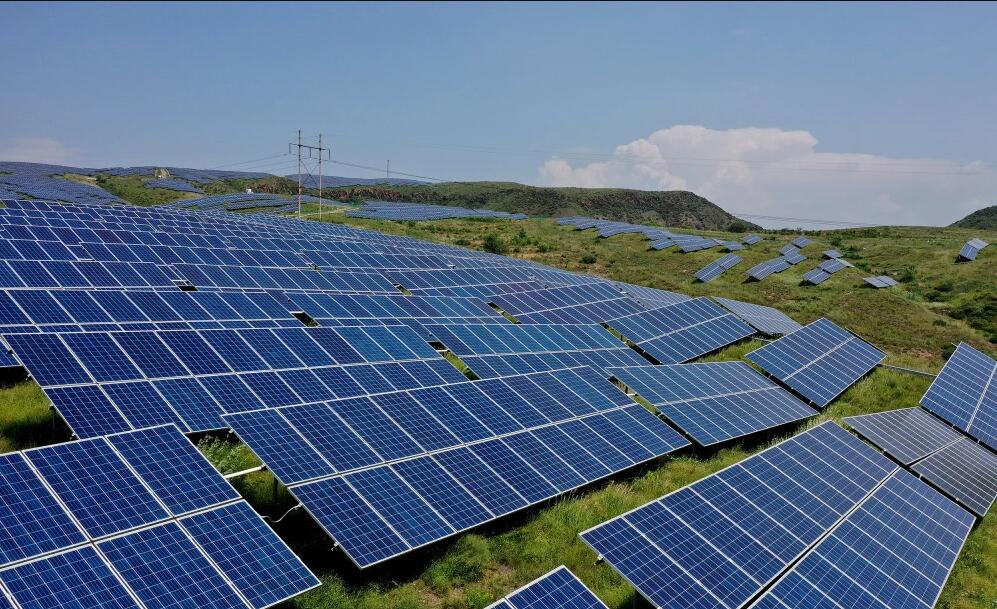2022 is a year full of challenges for the whole world. The New Champions epidemic has not yet completely ended, and the crisis in Russia and Ukraine has followed. In this complex and volatile international situation, the demand for energy security of all countries in the world is growing day by day.
In order to cope with the growing energy gap in the future, the photovoltaic industry has attracted explosive growth. At the same time, various enterprises are also actively promoting the new generation of photovoltaic cell technology to seize the market highland.
Before analyzing the iteration route of cell technology, we need to understand the principle of photovoltaic power generation.
Photovoltaic power generation is a technology that uses the photovoltaic effect of semiconductor interface to directly convert light energy into electrical energy. Its main principle is the photoelectric effect of semiconductor: the phenomenon of potential difference between heterogeneous semiconductor or different parts of semiconductor and metal bonding caused by light.
When photons shine on the metal, energy can be absorbed by an electron in the metal, and the electron can escape from the metal surface and become a photoelectron. Silicon atoms have four outer electrons. If phosphorus atoms with five outer electrons are doped into silicon materials, N-type silicon wafers can be formed; If boron atoms with three outer electrons are doped into the silicon material, a P-type silicon chip can be formed. "
The P type battery chip and N type battery chip are respectively prepared by P type silicon chip and N type silicon chip through different technologies.
Before 2015, aluminum back field (BSF) battery chips occupied almost the whole market.
Aluminum back field battery is the most traditional battery route: after the preparation of P-N junction of crystalline silicon photovoltaic cell, a layer of aluminum film is deposited on the backlight surface of silicon chip to prepare the P+layer, thus forming an aluminum back field, forming a high and low junction electric field, and improving the open circuit voltage.
However, the irradiation resistance of aluminum back field battery is poor. At the same time, its limit conversion efficiency is only 20%, and the actual conversion rate is lower. Although in recent years, the industry has improved the process of BSF battery, but due to its inherent limitations, the improvement is not large, which is also the reason why it is destined to be replaced.
After 2015, the market share of Perc battery chips has increased rapidly.
The Perc battery chip is upgraded from the conventional aluminum back field battery chip. By attaching a dielectric passivation layer on the back of the battery, the photoelectric loss is successfully reduced and the conversion efficiency is improved.
The year 2015 was the first year of technological transformation of photovoltaic cells. In this year, the commercialization of Perc technology was completed, and the mass production efficiency of batteries exceeded the limit conversion efficiency of aluminum back field batteries by 20% for the first time, officially entering the mass production stage.
The transformation efficiency represents higher economic benefits. After mass production, the market share of Perc battery chips has increased rapidly and entered a stage of rapid growth. The market share has climbed from 10.0% in 2016 to 91.2% in 2021. At present, it has become the mainstream of battery chip preparation technology in the market.
In terms of conversion efficiency, the average conversion efficiency of the large-scale production of Perc batteries in 2021 will reach 23.1%, 0.3% higher than that in 2020.
From the perspective of theoretical limit efficiency, according to the calculation of Solar Energy Research Institute, the theoretical limit efficiency of P-type monocrystalline silicon Perc battery is 24.5%, which is very close to the theoretical limit efficiency at present, and there is limited room for improvement in the future.
But at present, Perc is the most mainstream battery chip technology. According to CPI, by 2022, the mass production efficiency of PERC batteries will reach 23.3%, the production capacity will account for more than 80%, and the market share will still rank first.
The current N-type battery has obvious advantages in conversion efficiency and will become the mainstream of the next generation.
The working principle of the N-type battery chip has been introduced previously. There is no essential difference between the theoretical basis of the two types of batteries. However, due to the differences in the technology of diffusing B and P in the century, they face different challenges and development prospects in industrial production.
The preparation process of P type battery is relatively simple and the cost is low, but there is a certain gap between P type battery and N type battery in terms of conversion efficiency. The process of N type battery is more complex, but it has the advantages of high conversion efficiency, no light attenuation, and good weak light effect.
Post time: Oct-14-2022

